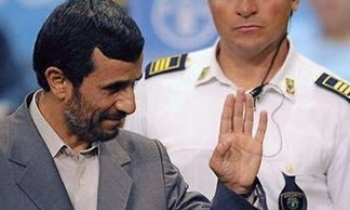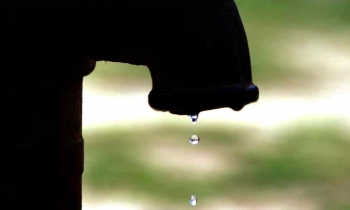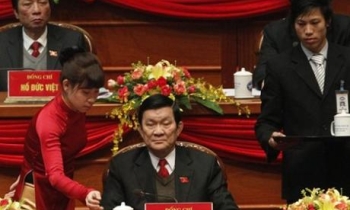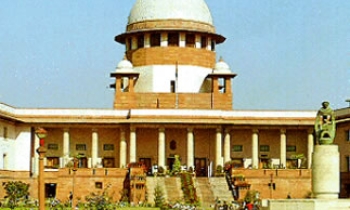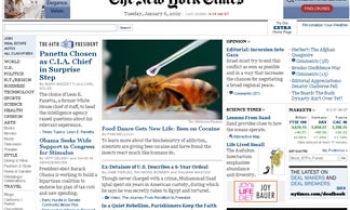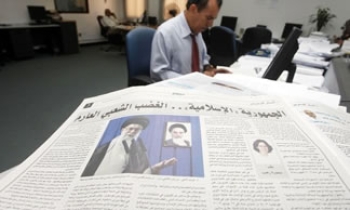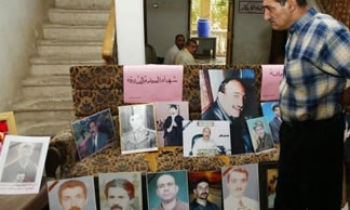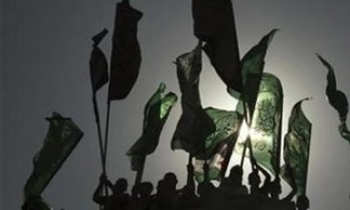Panic.
That's the operating system of the war on terror.
Panic is produced and mobilized. The pope's comment about Islam coincides with the E.coli spinach outbreak. Both create a phantasm of panic, with fear of the unknown shutting down borders everywhere, from countries to people to difference to ideas.
The current outbreak of Islamophobia has distinct visual markers in the commercial mass media, visually shaping panic. In September, Pope Benedict XVI delivered a speech at a university in Germany, a country with 1.9 million Muslim Turkish guest workers as well as Turks born in Germany.
Pope Benedict said, "show me just what Mohammed brought that was new, and there will you find things only evil and inhuman, such his command to spread by the sword the faith he preached."
On CNN, a white male news anchor in a business suit occupied the center of the frame, flatly describing the reaction around the globe to the Pope's speech. Behind him, digitally composited images formed four quadrants from Indonesia, Gaza, Sudan and Pakistan. These images showed large groups of angry people with picket signs in different-but untranslated-- languages. It was an image of chaos, undifferentiation, nameless crowds.
Translation: white male anchor equals calm rational discourse, swarming masses of Muslims equals incomprehensibility, violence, and untranslatability. This image erased the significant cultural, political and religious differences of these countries, promoting a visual geography that equates Islam and Muslims with panic.
CNN and Fox News represented the response in the so-called "Muslim world" as a visual iconography of racialized panic, lacking specificity, location or history. Pakistan is Indonesia; Indonesia is Morocco; Morocco is Malaysia; Malaysia is Saudi Arabia in this orientalized cartography.
However, if you can unplug yourself from cable news for a day or so, a very different kind of public media practice charting the war on terror and the politics of Muslim identity emerges.
For example, you might want to leave CNN and journey into the blogosphere to read Muslim intellectuals and journalists from all over the globe analyze everything from the Pope to Zidane's headbutt to racial profiling on airline flights. Altmuslim.com features some of the most penetrating writing and news coverage from a quite different vantage point.
Shobak.org, a blog and listserv, features the snappy, gutsy analysis of post conceptual artist Naeem Mohaeimen. Mohaeimen is a member of the Visible Collective, whose website, performances, and installations called disappearedinamerica.org track the politics of detained immigrants.
Independent public media from around the globe have resisted this production of panic. They operate in what theorist Arjun Appadurai has called cellular convergences, collaborations across difference and nations for larger transnational goals and solidarities.
A wide, diverse range of groundbreaking public media works counter the CNN view of Muslims, Islam and the occupation of Iraq by expanding the kinds of voices heard and specifying place and history.
Post conceptual artist Tony Cokes has produced a series of shorts called "The Evil Series." Rejecting the image as the focal point of the war on terror, Cokes animates text from Bush's speeches, news stories on bombings and Abu Ghraib, anti-terrorism websites and New York Times Op Ed pieces against changing red, white and blue backgrounds to unpack the semiotics of the war on terror. Post-rock soundtracks generate disjunctions between the horrific discourse of war and the pleasures of rock consumption.
The Shocking and Awful series, executive produced by Deep Dish Television, involved over 100 independent media producers from around the globe to chart the war in Iraq from the ground up. Deep Dish is a groundbreaking public media collective marshalling satellite distribution for public media.
Shocking and Awful features the voices of Iraqis, international anti-war activists and US military personnel speaking off the record to non-imbedded, independent journalists. The series features 12 half hour episodes ranging from occupation, women, cultural destruction, economics, oil, and resistance.
Code Pink, the feminist anti war group, partnered with the Iraqi independent media collective to produce Fallujah, a searing expose of the destruction of that city by US troops in November 2004 in a major offensive that went largely unreported in the US commercial media. Over 2,000 Iraqis died; 250,000 people lost their homes. Displaced Iraqis describe the military assault and their current living conditions in refugee camps.
Comparing the siege of Fallujah to Guernica, the piece was screened in this year's prestigious Whitney Biennial. That screening spurred over 1,000 university and public library purchases.
In contrast to the mass mediated panics the commercial media propagates and promotes, independent public media can deactivate this dangerous and volatile manufacture of panic, fury and fear. Public media on Islam, Muslims and the occupation in Iraq open up a transnational public space for a larger, more expansive, and more complicated conversation.
And as borders close and panic accelerates like a virus, maintaining a vigorous, analytical and resistant public sphere is a necessary inoculation and antidote.
Patricia R. Zimmermann is the author of Reel Families: A Social History of Amateur Film, States of Emergency: Documentaries, Wars, Democracies, and co editor of Mining the Home Movie: Excavations in Histories and Memories.

